* (restored)
—-

Post-rock first appeared in inverted commas and it might have been better if it’d stayed there. But it didn’t, and it looks as though we’re stuck with it. Still, never mind:
1. Bark Psychosis, “Scum”
As usually happens with genres, the label has provoked no end of anguish among artists and audiences, all understandably protective of their identities, keen not to be cashed out for the convenience of lazy journalist slags.
2. Slint, “Breadcrumb Trail”
I think post-rock is a label in the same way punk is a label: “Never Mind The Bollocks” sounds nothing like “Horses”, which sounds nothing like “Ramones Leave Home”, which sounds nothing like “The Feeding of the Five Thousand”, which sounds nothing like “Double Nickels On The Dime”, which sounds nothing like “Bad Brains”, which sounds nothing like “The Scream”, which … yet, when we talk about punk, we kind of understand what we mean. We understand that we’re talking about an attitude, a discipline, moreso than about how loud the guitars are and whether you can hear the words.
3. Mogwai, “Rollerball”
What I’m saying, then, is that post-rock was a useful label during a phase in pop music when the fabric of what a band / performance / recording could be was getting playfully tailored into new shapes. Of course, this goes on all the time, often un-apprehended. The cyclic view of history as applied to pop music doesn’t sell any significant number of inky newspapers, which used to be considered an important thing. But more importantly, a label could be a license to create.
4. Disco Inferno, “Footprints In Snow”
It probably isn’t important to point out where this stuff comes from, exactly, its precedents. They’re well documented. More important than any one figure, I think, is access to technology. I’m pretty sure about this: throughout the 80s and into the 90s, a bunch of affordable, viable studio technology emerged, meaning that it was no longer absolutely necessary to be Brian Eno or Trevor Horn before you could spend days playing around with samplers or synthesizers to see what happened. Conventional wisdom has it that this is part of how acid house happened; I think the same forces were at work here, too.
5. Godspeed You Black Emperor!, “Moya”
It’s also tempting to consider a lot of this music as oppositional, or at least pointedly individual. To take one example: for a long time I didn’t care for Godspeed, for exhaustively thought-out reasons I won’t bore you with. But, as I’ve realised, what happens in Godspeed’s music is defiantly their own thing. The reverent, solemn pacing of their music is as purposeful as the presentation of their records and live performances. That I used to bridle at this, then, was my problem.
6. Stereolab, “Super-Electric”
A drone can be a powerful thing. It says things like “I persist,” and “I contain multitudes”. Anyone who’s had the chance to hear Charlemagne Palestine’s “Strumming Music” or Antonio Carlos Jobim’s “One Note Samba” will have heard how a simple group of notes repeated over and over again can reveal animation and interest in a way that seems simultaneously magical, irresistible and defiant. In isolation, like in the Palestine performance, a drone can be beatific. Forced to exist among other musical events, a drone can feel inconvenient, itchy, destabilising. It can be, particularly in Stereolab’s music, the presence of an active resistance.
7. Tortoise, “Glass Museum”
I find it interesting to think about the relations between a lot of this music and vocals. In an earlier draft of this piece, I wrote that if there was any unifying concern of the music considered under this label, it might be that it desires deep reflection in the listener. That’s not quite sufficient, but I think there’s something to it. Somewhere and often, speech seems to have become a problem.
8. Bowery Electric, “Fear Of Flying”
Then again, words might only get in the way. The songs on Slint’s album Spiderland are sinister, elliptical stories set to measured, pacing music that feels disconcertingly like what brooding on deep hurts actually feels like. As the gathering storm of the last song on the record finally breaks, the narration becomes inaudible for a few crucial seconds, and the thread of exactly what awful thing was going on becomes forever lost to the listener. But the scariest song on this frightening record is still the instrumental.
9. Gastr del Sol, “Every Five Miles”
If we want to think about the practice of making music like one or another of these examples, we might start by thinking about manipulating context, as a director and editor manipulate the context of a shot in a film. For Don Caballero and Labradford, song titles become super-verbose, turned against their function, (“In the Absence of Strong Evidence to the Contrary, One May Step Out of the Way of the Charging Bull”) or otherwise disappear altogether (“S”, “Recorded and mixed at Sound of Music, Richmond, VA.”). Meanwhile, GYBE’s records materialise in editions that combine the haphazard and inscrutable with the painstakingly deliberate.
10. Miles Davis, “He Loved Him Madly” (part 1)
“Haphazard and inscrutable and painstakingly deliberate” would also be a fair description of Miles Davis’ “He Loved Him Madly”, a funereal elegy for Duke Ellington that sprawls like a luminescent jellyfish in a deep dark sea. The animation in this limpid music is animation in space, in timbre, and in utterance. Spliced and mixed down from hours of improv, it drifts, seemingly motionless, but under the surface it teems with meaning.
11. Labradford, “Lake Speed”
Portentous brooding isn’t the only permissible mode, even if some people seem to think otherwise. If this practice of music is truly open, after all, that means it must also being open to being upbeat, melodic, even charming. It might be an unlikely prospect that the Jonas Brothers will get together with Jim O’Rourke to do an album of faith-crisis-themed tropicalia with extra VCS3, but it doesn’t feel altogether impossible.
12. Do Make Say Think, “Classic Noodlanding”
There is something that I find particularly satisfying about any sort of music or theatre or cinema that attempts to engage with these concerns of space, context and utterance. I have some fussy, half-formed notion that doing so enables these artforms to access the audience’s imagination in the same way that fiction does, but I don’t have the theory chops to back these sorts of assertions up. Ultimately all I know is that it involves me in ways other music, including some of my favourite music, does not, and I like that.
13. Mono, “Follow The Map”
I know that I respond to recognising that people are trying to achieve something. It doesn’t have to be something brand new. I think there is a unique thrill that comes with witnessing a particular quality – I originally wrote ‘tangible effort’, but I might as well write ‘daring’ – that doesn’t come with anything else.
14. Pluramon, “Time (catharsia mix)”
It’s also a question of faith: willingness on the part of the listener to hear “He Loved Him Madly” as a drifting elegy is pretty much all that keeps it from sounding like a guttering jam session by a band that can’t remember how to play “Mood Indigo”. The listener has to be daring too.
But given the choice between someone who’s precisely in control of his utterance, and someone who might well fuck it up but is absolutely committed nonetheless, I’ll always opt for the latter. When we’re asked to bring something of ourselves to a performance or a film, we’re asked to do work. It’s always easier and more pleasurable to work with people who take care with what they do.
15. Fridge, “Five Four Child Voice”
I think the post-rock label identifies a phase in musical history where this sort of experimental play was something people became excited about. But I think that some of the music from this time remains so rewarding because of its interplay with more familiar forms and aesthetics. I think that experimentation for experimentation’s sake can often be valuable or remarkable, but I don’t think it’s often as daring or rewarding as expression is.
Critical theory or this or that other baggage isn’t necessary to either understand or justify wanting this sort of discovering-experience with music, because when you get ahold of it you feel a sensation that’s completely immediate. It’s a sea of possibilities, as P. Smith puts it, and we can walk into the waves any time we like.
16. Xinlisupreme, “All You Need Is Love Was Not True”
Music credits:
1. “Scum” by Bark Psychosis is on the compilations “Independency” and “Game Over”
2. “Breadcrumb Trail” by Slint is the first track on their album “Spiderland”
3. “Rollerball” by Mogwai is on the compilation “EP + 6”
4. “Footprints In Snow” by Disco Inferno is the last track on “D.I. Go Pop”
5. “Moya” by Godspeed You Black Emperor is on “Slow Riot For New Zerø Kanada”
6. “Super-Electric” by Stereolab is from “Switched On”.
7. “Glass Museum” by Tortoise is from “Millions Now Living Will Never Die”
8. “Fear of Flying” by Bowery Electric is on “Beat”
9. “Every Five Miles” by Gastr del Sol is from “Crookt, Crackt or Fly”.
10. “He Loved Him Madly” by Miles Davis is on “Get Up With It”
11. “Lake Speed” by Labradford is on their 1996 self-titled album.
12. “Classic Noodlanding” by Do Make Say Think is from “& Yet & Yet”
13. “Follow The Map” by Mono is on “Hymn To The Immortal Wind”
14. “Time (catharsia mix)” by Pluramon, featuring Julee Cruise & Keith Rowe, is on “Dreams Top Rock”
15. “Five Four Child Voice” by Fridge is on “Happiness”
16. “All You Need Is Love Was Not True” by Xinlisupreme is from “Tomorrow Never Comes”
Bonus tracks
16. Aerial, “M – AASS”
17. Rachel’s, “Moscow is in the telephone”
18. Stars of the Lid, “Dungtitled (In A Major)”
19., 20. Jim O’Rourke, “Not Sport, Martial Art” & “Fuzzy Sun”
21. Cul de Sac, “This Is The Metal That Do Not Burn”
A Silver Mt Zion, “God Bless Our Dead Marines”
22. This Will Destroy You, “Threads”
23. Clogs, “Lantern”
24. Don Caballero, “Delivering the groceries at 138 bpm”
25. Explosions in the Sky, “Six Days At The Bottom Of The Ocean”
—-
*
p.s. Hey. ** David Ehrenstein, Hi. It’s less difficult vis-a-vis getting actually interesting films distributed here in France. There’s a solid network of cinemas and art spaces geared to that. But yes. With Zac’s and my new film, the plan is to initially roll the film out mostly through museum and art space screenings (plus certain festivals), which makes sense since that’s where we see a lot of the films we’re into. In the States, we learned from ‘PGL’ that there’s almost no way to get films like ours shown in actual cinemas. Even the seemingly adventurous theatres and chains really aren’t very adventurous at all. ** Dominik, Hi! Yeah, I wonder if I’ll ever know what the hacking is about. I just want it to stop, and it just isn’t giving up at all. Completely weird. Well, I really will believe it when I see it about the reopening here. This thing is completely unpredictable. So, so sorry about your new lockdown. Yuck. Ah, your love is into books, excellent. Love positioning himself in front of you and parting the Pandemic like Charleton Heston parted the Red Sea, i.e. thusly, but with a much, much better soundtrack, G. ** Tosh Berman, Hi, T. Good question. Certainly they are not physically doing the hacking since it hasn’t stopped for even a moment for over a week now. Big congrats and no small amount of envy: you getting the vaccine shot. How did the online interview go? As almost always with these US online things, they happen over here when I am dead asleep. ** Damien Ark, Hi. 11:11 is something else, yeah. Mike Carrao friended me on Facebook yesterday, so I guess I’ll find out if he’s truly an alien. AP is a helluva press too. Presses-wise, it’s a total embarrassment of riches these days. I’ll look for Mika’s book. Take care over there. ** Steve Erickson, Yep, 75 so far. But it’s supposed to come within my range ere too long. Me too, re: John, and you never know with him, but he seems pretty adamant that he’s finished with filmmaking, at least at the moment. ** Jack Skelley, We are, or, we were barrel makers indeed. Apparently. And people with the name Jack tend to jack off a lot. But your name is John, so I guess you just tend to go to the bathroom a lot? Yeah, I remember Napili Bay really well. My family stayed there at the Mauian for the entire summer three years in a row when I was 14, 15, and 16. I saw Neil Armstrong walk on the moon on the TV in the Napili Kai rec room. I was there when I took LSD 24-hours a day for a month and had a gigantic mental breakdown that I don’t think I ever fully recovered from. So, yes. And, yes, re: the waves. One summer this actor who was very famous at the time, Anthony Franciosa, stayed there, and he was always strutting around on the beach showing off because he was so famous and everything, and one day he was wading in the water and a huge wave rose up and dragged him out to sea. They had to send divers to hunt for him, and they finally dragged his unconscious body onshore and revived him using mouth to mouth, and a huge crowd gathered, and it was so humiliating, and the crowd was laughing at him, and it was great. Did you ever go to the next cove over, just on the other side of the Napili Kai? I can’t remember its name. The waves there could go insane, thirty feet and more. But I’ll stop ‘cos I could blah blah about Napili forever. De-party. ** Mark Gluth, My pleasure, of course. Last I checked they seem to be raising a decent amount of funds. Hope they make their goal. ** Gus, Hey there, Gus! Good to see you, sir! People often tell me the blog is their waking up, coffee drinking company, and I like that for some reason. I’m glad you like Diarmuid’s book. I mostly do too, ha ha. Have you interviewed Elias already? My friend Zac and I hung out with him a bit one time in Paris, and I thought he was a super great guy. That journals story makes sense. When we were with him, he read out part of a short story that he was writing on his phone, and it was really good. Ha ha, Cubby Branch lives! Nice! Thank you for co-opting him. With a name like that, he deserves a bigger life. ‘Sister’ is my favourite SY album, which I think is why Thurston asked me to write those liner notes. I’m excited to read your story. Very cool! I’ll do that after I finish this. Oh, wait, and your other piece too. Bonanza. Everyone, Get your clicking fingers ready because Gus, fine writer and music artist who’s also part of the great and highly recommended music group/project California Girls, has two things that can be read — first a story starring the infamous Cubby Branch here, and, second, a short fiction piece … and here I quote … ‘which came out of this really awful workshop I did about making performance work out of these early sociological manuscripts about cruising but it became this bigger thing thinking about a failure to transcend in life and this obsession I have with Yukio Mishima’, here. Thanks a lot. I’m fending off the madness as best I can, and, if you’re amidst any madness, I hope it either backs off you or feeds your art. Take care. ** Misanthrope, Thank you. I would live in an amusement so fast it would make your head spin so fast. Get through the week fully. ** Brian O’Connell, Hi, Brian. All I can say, as someone who avoids Twitter at almost all costs, is I hope your day away lasts a day at least. Mental health should be prioritised. My Monday … I promised to give something to this upcoming anthology, so I started to figure out what I could give. I watched a fun documentary called ‘Class Action Park’ about the late, extremely dangerous New Jersey water park Action Park. And … not a ton else. Today … I might talk to the producer guy about the new film’s budget and/or see a friend for a coffee and a walkabout. Yours? Did you manage to avoid Twitting and being Twitted at, for instance? ** John Newton, Hi, John. You sound like you’ve got your obsessions sorted, good. Ithink mine are sufficiently corralled maybe too. No, DMT started being easily available just at the time I stopped doing drugs. I just missed it. I was never particularly drawn to do it. It always sounded a bit too heavy and laborious in my friends’ recountings. I took A LOT of LSD. I just mentioned to Jack up above about taking LSD 24-hours a day for a month. I couldn’t really count the number of times. I was very into LSD for quite a while. It took two very serious mental breakdowns from very, very bad trips before I finally swore it off. Phantasialand in Germany is one of my two favorite amusement parks in the world, and I’ve been to a lot of amusement parks, so that’s saying something. It and Efteling in Holland are my favorites. Otherwise, in Germany, EuropaPark is a very good park. And Tripsdrill is a smaller park, but excellent. All of them are in the western part of Germany. All highly recommended if you get over to these parts. ** Okay. Today I’m restoring another old guest-post by the legendary and much missed d.l. The Dreadful Flying Glove. It’s lovely. Check it out. See you tomorrow.

 Mike Corrao Rituals Performed in the Absence on Ganymede
Mike Corrao Rituals Performed in the Absence on Ganymede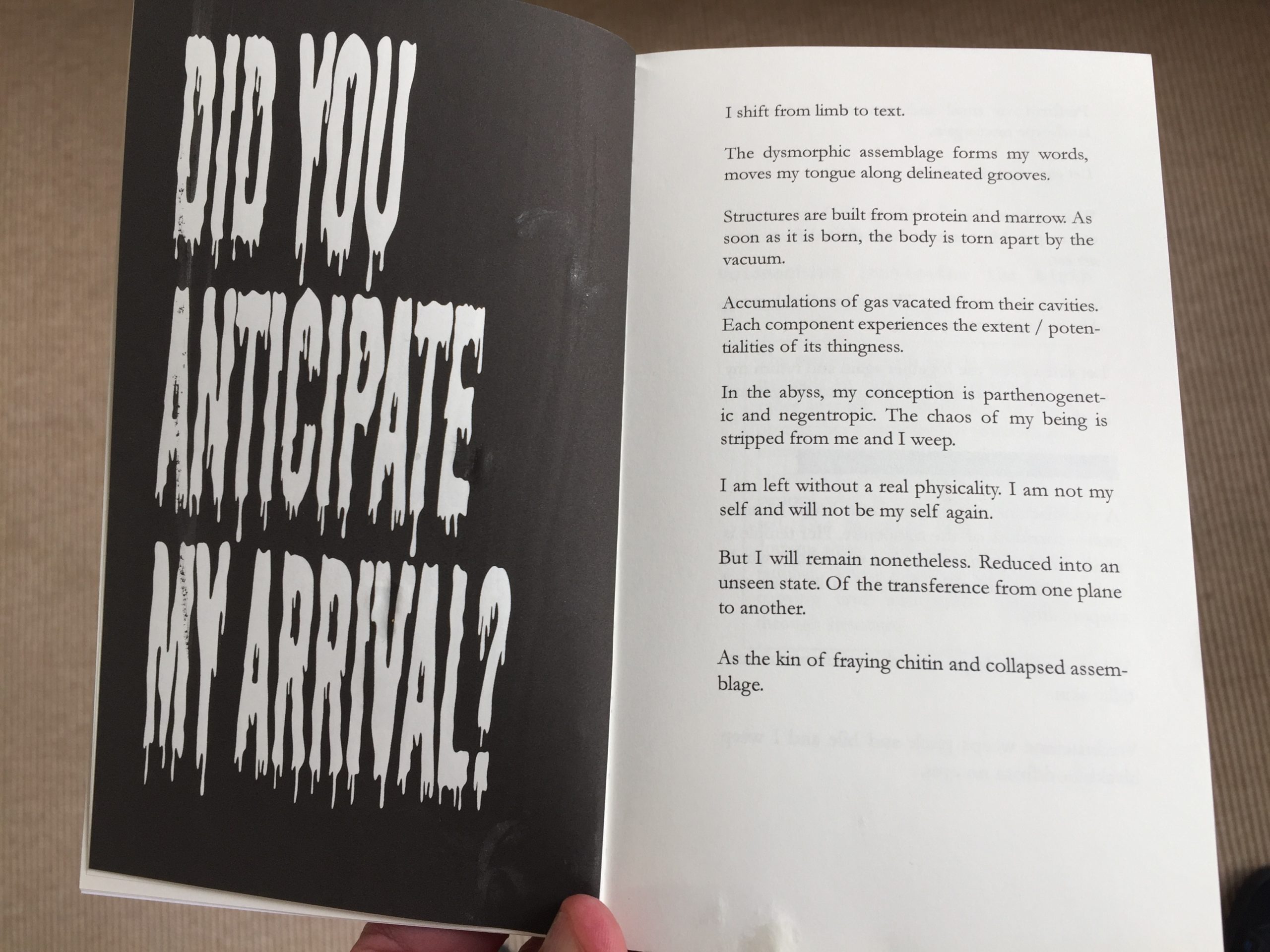

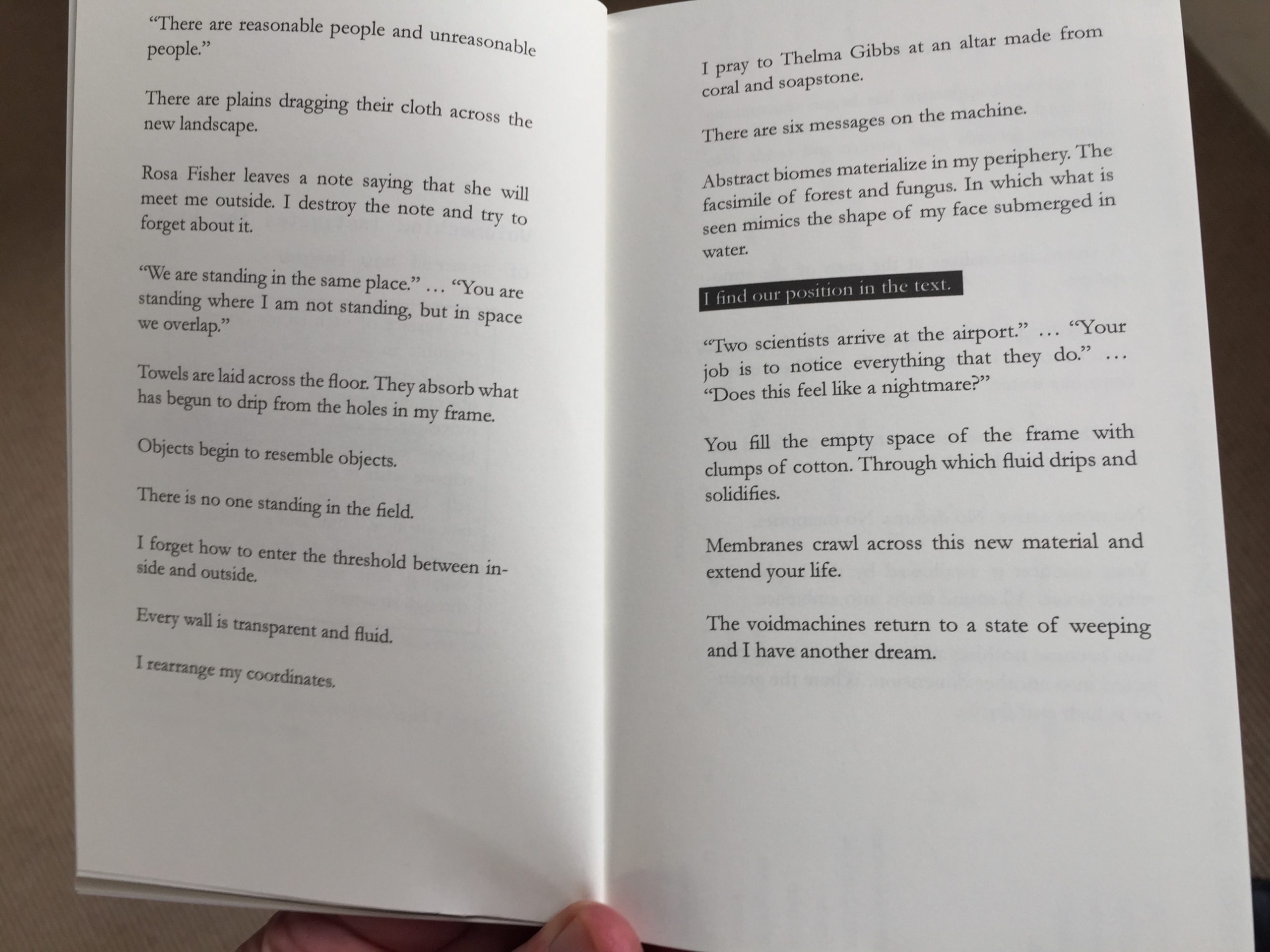
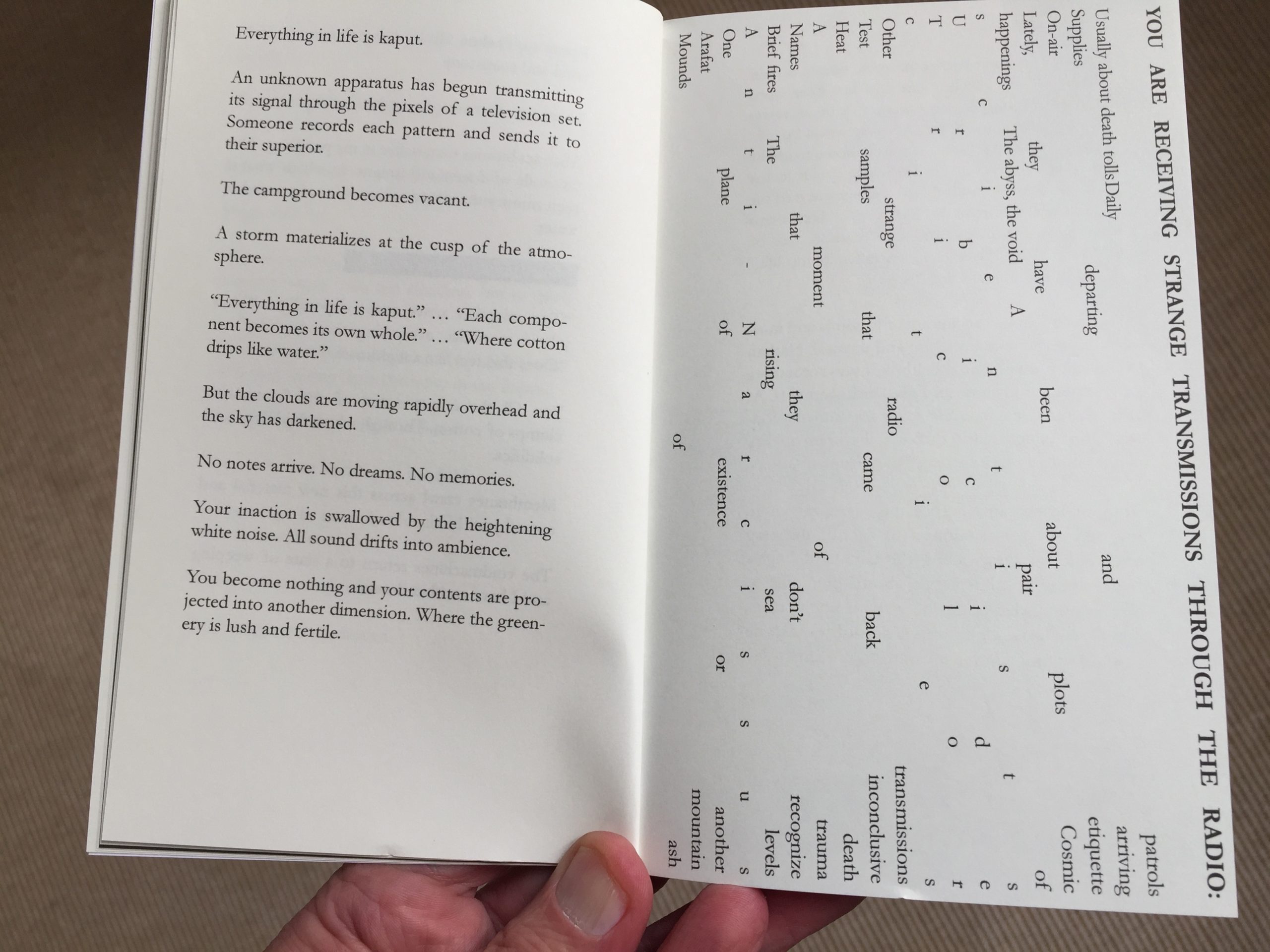
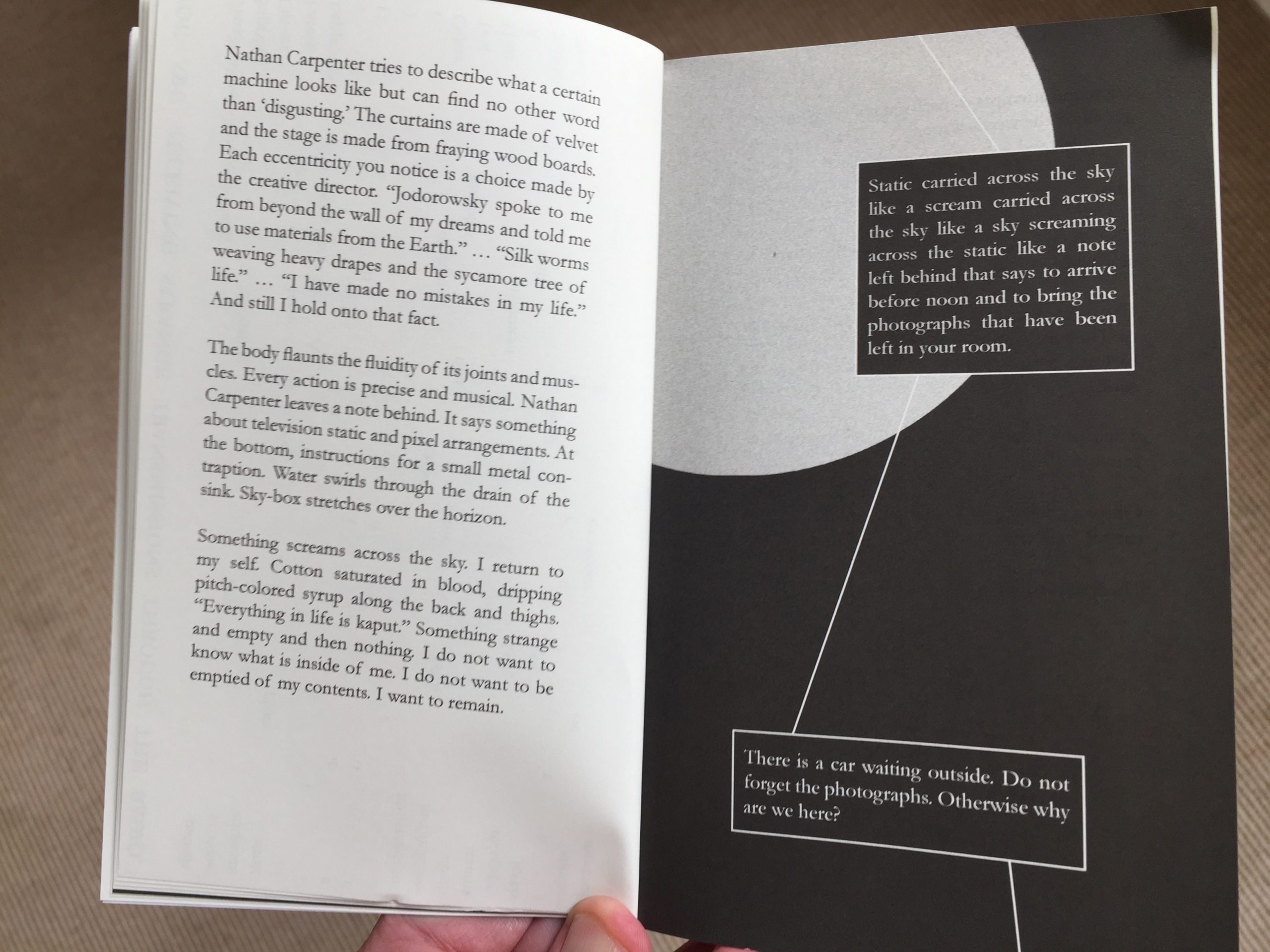
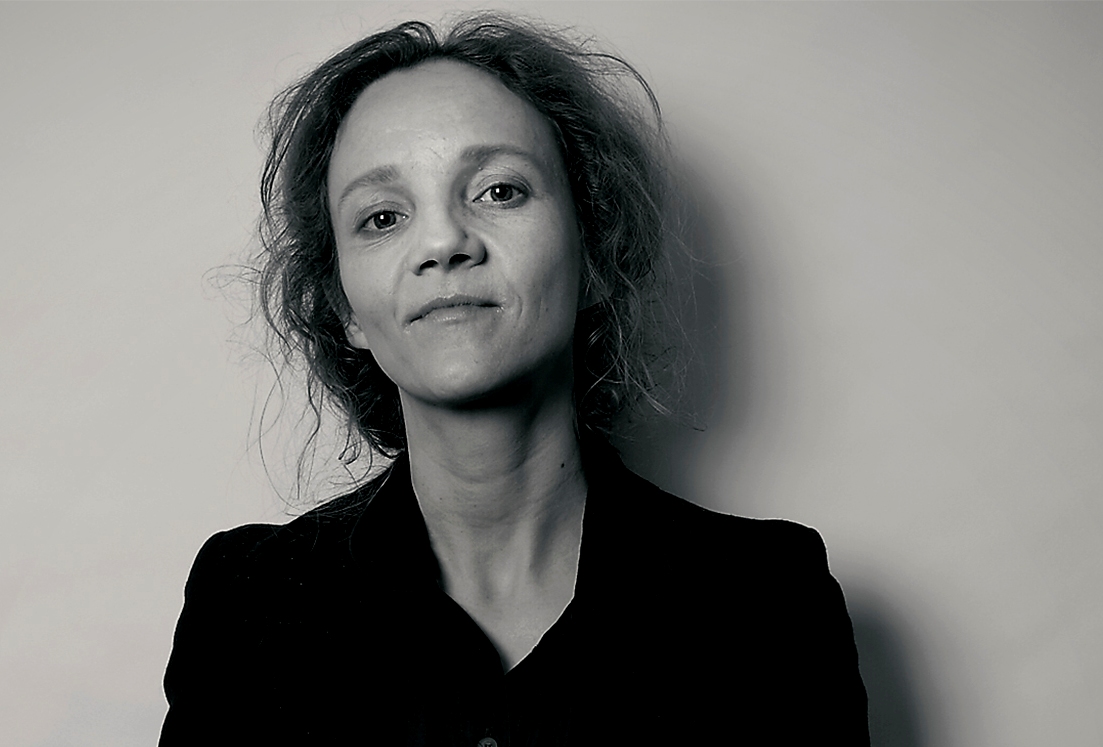
 Ursula Andkjær Olsen Outgoing Vessel
Ursula Andkjær Olsen Outgoing Vessel
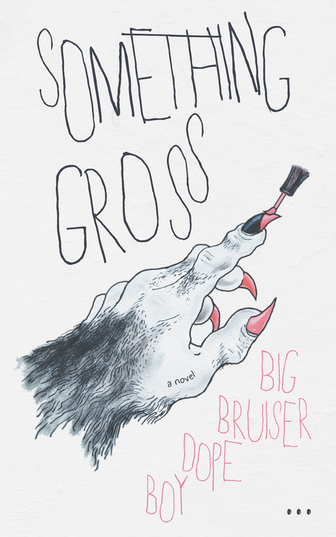 Big Bruiser Dope Boy Something Gross
Big Bruiser Dope Boy Something Gross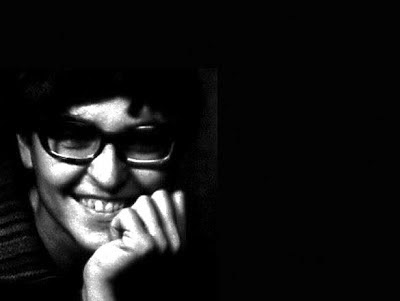
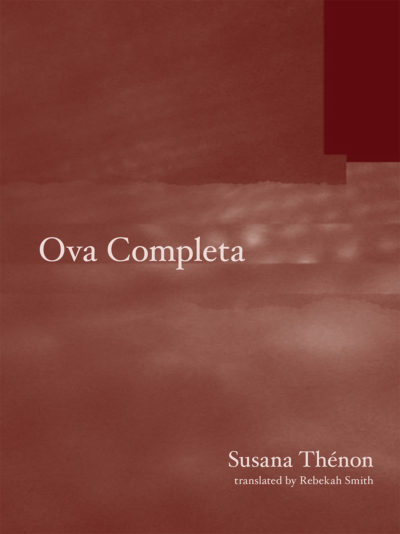 Susana Thénon Ova Completa
Susana Thénon Ova Completa
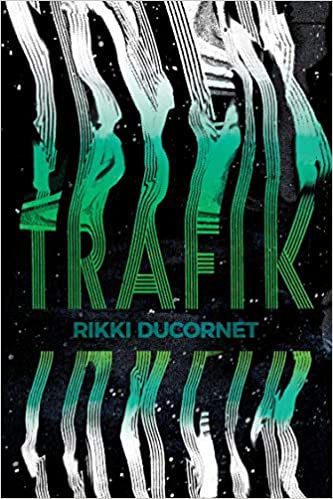 Rikki Ducornet Trafik
Rikki Ducornet Trafik



 Now available in North America
Now available in North America 